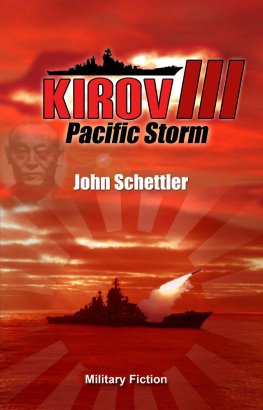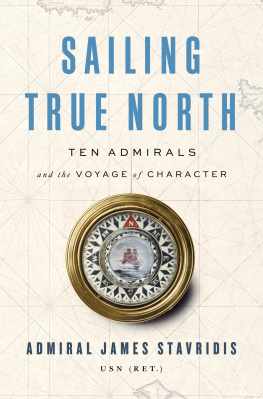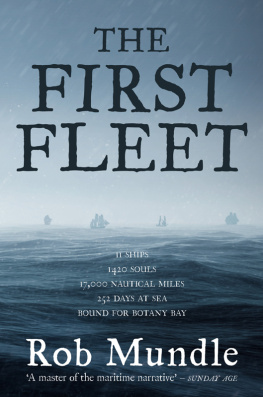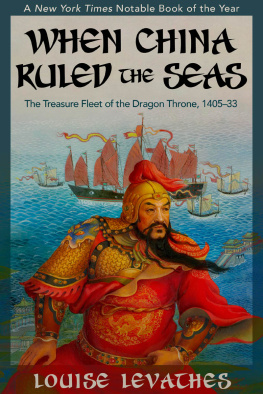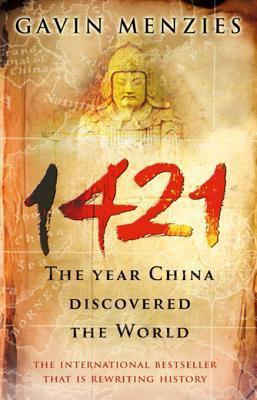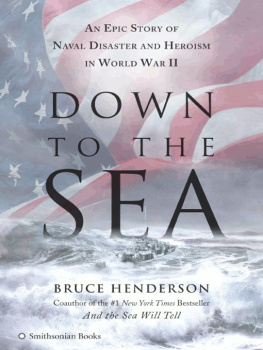Acknowledgments: The author wishes to thank Eric Oey, Nancy Goh, Erin Dealey, John Stucky, and her family for their help and support on this project. The illustrator gratefully acknowledges Chung Chee Kit, Tan Ta Sen, Kim Jane Saunders, Julian Davison, Tan Guan Moh, Heng Kok Hiang for their invaluable help.

Long ago the emperor of China called his old and trusted friend to his enormous palace. I am now the most powerful ruler in the world, he announced. We must show the world that China is the largest and richest nation on earth. We will build the greatest ships the world has seen and you, my friend, will command them. You will sail across the seas to befriend leaders of other nations, bring them gifts, and return home with fabulous treasures. This voyage shall bring great glory to China.
Zheng He was stunned. Can I lead such a voyage? he thought. I have never sailed before! But the emperor saved my life in battle. I must be loyal to him now.
Bowing low, Zheng He replied, Emperor, I am honored to lead this important voyage.
In the autumn of 1405, a massive fleet sailed from China under the command of Admiral Zheng He (pronounced Jung Huh ). Over the next 28 years, the admiral and his fleet sailed more than 35,000 miles (56,000 km) exploring the vast Western Oceans.
The admirals beginnings were humble. When Zheng He was only ten his father was killed in a rebellion in southwest China and Zheng He was taken prisoner. This bright, tough boy soon had an unusual stroke of luckhe became the servant of prince Zhu Di ( Joo De ). In time the prince and Zheng He grew to become close friends and the two of them fought to gain control of China. In 1402 they were victorious and Zhu Di was crowned emperor of China, becoming the third ruler of the Ming Dynasty. As emperor, he continued to rely heavily upon his old friend, Zheng He.
Zheng He was tall and stout, with a voice like a huge bell and skin rough like the surface of an orange. His presence was commanding and his leadership made him perfect to lead the largest fleet the world had known on important voyages of discovery, commerce, and diplomacy.

Soon all of China buzzed with activity preparing for the voyage. Loggers cut massive trees for the ships, carpenters sawed and hammered huge planks of wood, mapmakers drew long sea charts, weavers wove gigantic silk sails, farmers doubled their crops, and artisans crafted their finest wares. The emperor personally selected the finest gifts for kings of foreign lands. He toured the shipyards to exhort his shipbuilders. Work faster men! The Treasure Ships must sail by winter! he told them.
Secretly, the emperor was pleased, knowing he was building the largest and finest ships ever made.
Meanwhile, Zheng He studied his sea charts and sought advice from expert sailors. Though he sailed daily, he often lost control of his ship. And while others slept, the admiral worried, Will I ever learn to control these gigantic ships?
Chinas emperor ordered hundreds of ships to be built and commanded that they be filled with valuable gifts and trading goods. The navy was so large it was named the Treasure Fleet. The emperor appointed Zheng He as its commander, naming him Admiral of the Western Seas.
Much of China was involved in the construction of the fleet. Beginning in 1404, more than 20,000 craftsmen lived and worked at Chinas imperial boatyards in Nanjing. Carpenters, ironsmiths, caulkers, sail makers, and many others toiled day and night constructing the huge fleet.
Chinas great shipbuilding expertise was used to build the largest wooden vessels ever seen. The ships were painted with tung oil, a waterproofing mixture that had been used since the 7th century. Dragon eyes were painted on the bow of each ship so that it could see where it was going.
To impress foreign leaders, the emperor ordered artisans to produce their finest wares. For the average Chinese, the voyages meant higher taxes and labor. But the emperor didnt notice. He was interested in the glory and riches the voyages would bring to his reign and to his country.

As winter approached, the massive ships were finally ready. Huge crowds gathered to see the ships be launched into the water. Then, thousands of crates filled with food, weapons, and trading goods were loaded on board, along with chests containing priceless gifts. At last, the sailors and soldiers boarded the ships. When the huge sails went up, the crowd cheered wildly. As the ships sailed down-river, people ran alongside waving bits of silk. Be careful! Watch out for pirates and sharp reefs! Well pray for you!
Onboard the lead ship, Zheng He was thinking that no man had ever sailed this far. Filled with excitement, he lit incense and prayed, With heart pure and true, I ask that our sails meet with favorable winds, that the sea lanes be peaceful, and that gold and pearls fill our ships with glory.
In the autumn of 1405, hundreds of brightly-painted junks were launched into the Yangtze River and sailed through Chinas capital, out to the open sea. With 317 ships and 27,000 men aboard, this was the largest navy the world would see until World War II, more than 500 years later!
Many important Chinese inventions made these voyages possible. The Chinese invented paper and printing. They also invented the magnetic compass and mechanical clocks. They studied the stars and mapped the major constellations. Zheng Hes captains navigated using long paper sailing charts printed using wooden blocks. The charts contained compass readings, star locations, lengths of time, and important physical landmarks. Using these tools, the Treasure Fleet was able to sail across the open seas instead of hugging the coasts which was far more risky.
The emperor appointed a captain for each ship who was given the power to kill or let live. Soldiers and sailors made up the bulk of the crew but doctors, scribes, shipbuilders, priests, cooks, and diplomats were crew members too. The fleet and its crew were truly an awe-inspiring sight!

After days of fine, clear sailing, Zheng He sighted the rugged shore of Champa. Just then, powerful swells pushed the ships against razor-sharp reefs. Steady the ships! he ordered. While his men avoided the reefs, Zheng He studied his charts. Man oars! I see a safe passage, he said.
When the fleet arrived, soldiers lined the shore, ready to attack. Zheng Hes men prepared for battle but the admiral approached them calmly, Greetings friends, we come in peace! We bring gifts from Chinas emperor. Much pleased, the king ordered the weapons to be put down. After days of feasting, the king led Zheng He on a tour of his realm, which was dotted with lovely temples and fertile rice fields.
Chinas gigantic fleet dazzled the people of Champa. The twelve largest ships in the fleet, called Treasure Ships, were as long as one and a half football fields. No one has built wooden sailing ships as big before or since. By comparison, Columbus sailed to America 90 years later in ships that were less than a quarter the length. With nine staggered masts, twelve massive silk sails, and a complicated system for steering, the Treasure Ships could travel at eight knots per hour. Colorful paintings, bronze cannons, and elaborate carvings covered the length of each ship.



